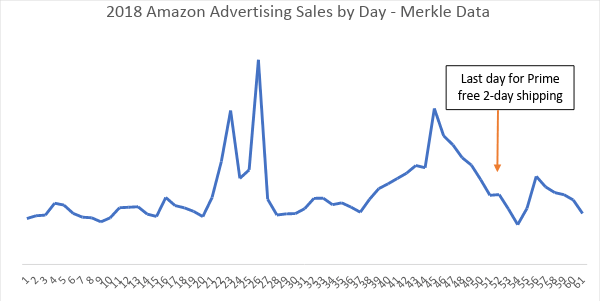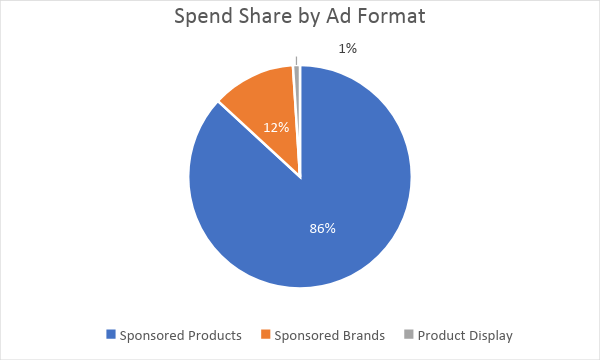Amazon had a record-breaking holiday season, here’s how advertisers managed it
- Fahad H

- Jan 22, 2019
- 3 min read
The 2018 holiday season was record-breaking for Amazon, which recorded its biggest shopping day in the company’s history on Cyber Monday. Advertisers participated whole-heartedly to capture their share of the increased consumer demand. Beyond a merry sales season for retailers selling giftable items, here are a few trends that (my employer) Merkle clients saw during the holidays.
Consumers were in a buying mindset, regardless of product category
The season wasn’t only strong for seasonal retailers. Advertisers selling products completely outside the gifting realm also saw strong performance in November and December, thanks to the consumer mindset. Many brands that sell non-gifting items saw 2018 monthly sales volume peak in November. Shoppers were in the mood to purchase, excited to buy items of all kinds, regardless of seasonal need or relevance. This is an important differentiation to keep in mind for managing advertising on Amazon versus other platforms for catalogs that aren’t gift-oriented. Because of the way consumers shop on Amazon, it’s important to have a thoughtful advertising strategy this time of year, even for products that wouldn’t normally see a lift in sales during the holidays.
Amazon’s shipping reputation brought in last-minute shoppers
Solid sales numbers continued to roll in on Amazon up through Dec. 22. Its free, reliable two-day shipping kept a steady stream of holiday shoppers purchasing long after many retailers’ shipping cutoff dates had passed. While any retailer could conceivably offer free two-day shipping to capture last-minute shoppers, the key difference is the consumer knowing about this as an option and trusting that their gift will get delivered on time. This reputation, combined with Prime Shipping options, could help sellers on Amazon capture more revenue close to Christmas than they would on their own site.

Sponsored Products stole some spend percentage share from Product Display
Ad spend percentages for the holiday were similar to what Merkle clients observed for Q3, with some Product Display spend shifting to Sponsored Products. Sponsored Products accounted for 86 percent of spend, Sponsored Brands drove 12 percent of spend and Product Display was only responsible for a meager 1 percent of spend. Moving dollars from Product Display ads, which garnered a 51 percent lower sales-per-click than Sponsored Products, makes sense for advertisers with budget limitations looking to maximize revenue during the holidays.

New Sponsored Brand placements grew impressions and drove down click-through-rate
At the end of August, Amazon rolled out additional placements on desktop and mobile for Sponsored Brand ads, leaving advertisers optimistic that the new reach would bring additional qualified traffic to their programs during the holiday. While clicks did increase, impressions increased at a much greater clip, driving down overall click-through-rate in Q4 compared to Q3. This is not a concerning trend since the new placements are all less prominent than the original top-of-page spot occupied by Sponsored Brands. However, it does help highlight that capturing the coveted top-of-page placement is still key for driving Sponsored Brand clicks.
Amazon improved advertiser experience for 2018, with room to continue improving in 2019
Along with sales volume improvements, the 2018 holiday season brought the gift of improved Sponsored Brand ad copy approval times. Anecdotally, advertisers noticed their copy getting approved more quickly, which was especially beneficial in instances where promotional messaging needed to change last minute. Policy enforcement, however, was fairly inconsistent with some disapproval reasons not making sense given the content of the ad copy. The improvement in approval times was an encouraging step forward, and I’m hopeful to see process improvements continue in 2019.
Amazon also gifted advertisers with several new features in mid-November, including product attribute bidding and new automatic campaign matching options on Sponsored Products. While these developments are certainly exciting, advertisers had virtually no time to explore these new features and effectively leverage them for this holiday season. Ideally, all major updates would be rolled out by early October for any campaign changes to be worked into the holiday prep roadmap appropriately.
Finally, Amazon released the portfolios feature, which will aid advertisers in setting shared budgets across multiple campaigns. While this can help with longer-term budgeting (say, on a monthly basis), advertisers are still blind to intraday performance, making daily pacing and data-driven midday bidding adjustments a challenge.
Overall, the 2018 holiday season for Amazon sellers was one filled with good tidings, cheer and plenty of revenue. Some of the gifts, like the feature rollouts mentioned above, will keep on giving – I’m excited to unwrap and use them fully in 2019. Now, who’s ready for Prime Day?








Comments